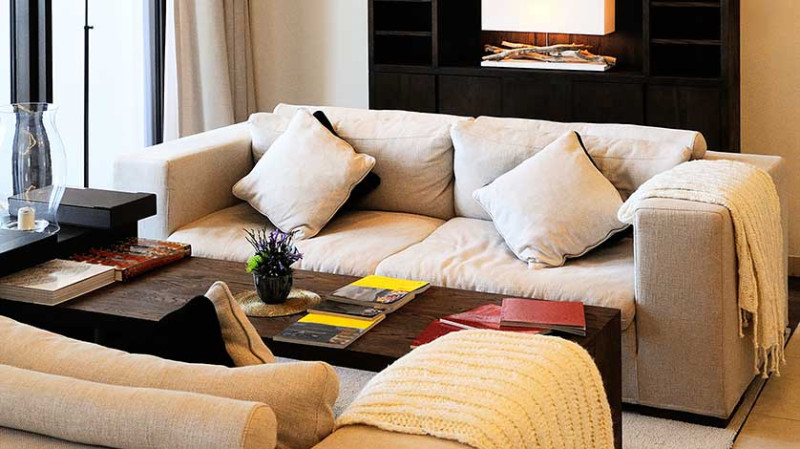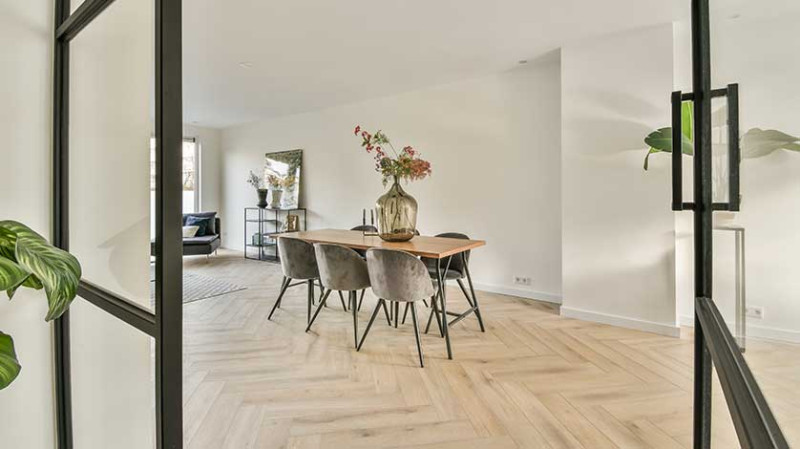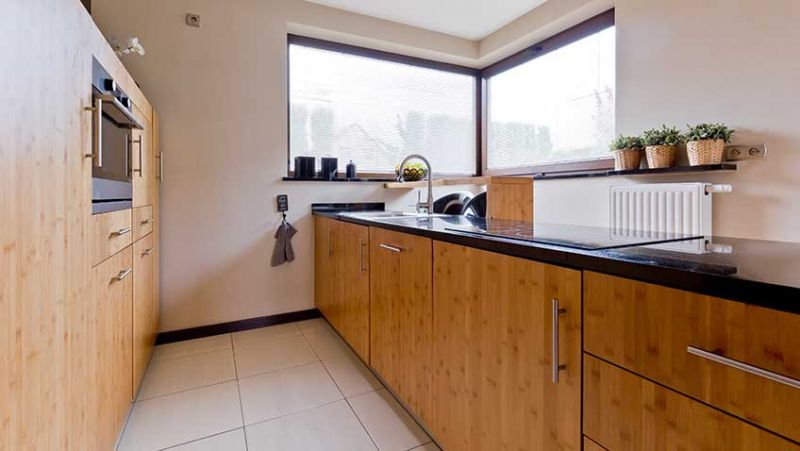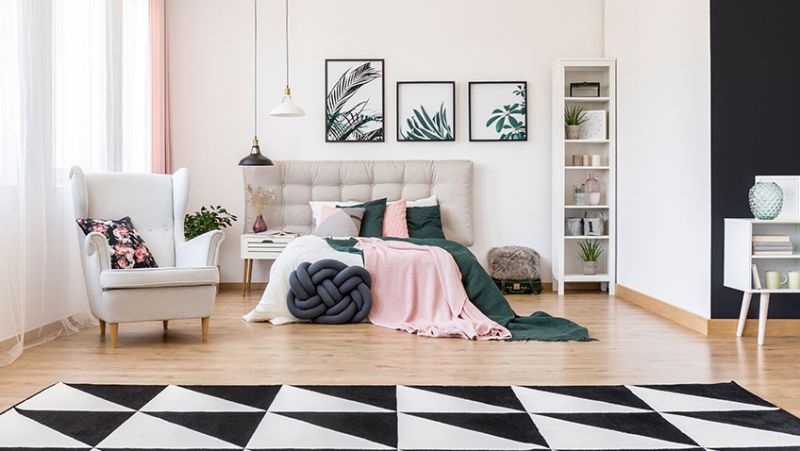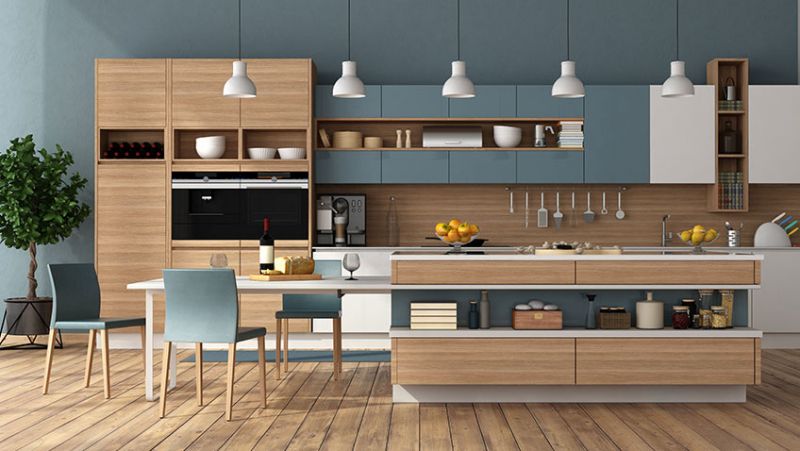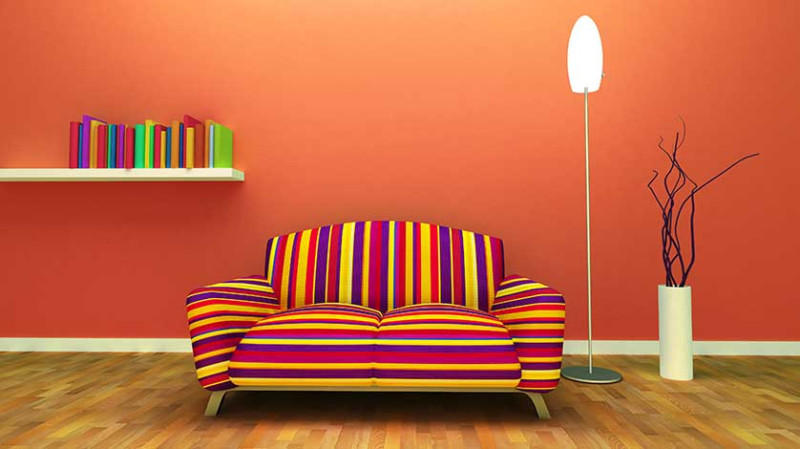
Whether you're a DIY enthusiast revamping your living room, a young professional investing in your first home, or an architect working on a new project, understanding the fundamental rules of interior design is key to creating visually appealing and functional spaces. While design is often thought of as subjective, some tried-and-tested principles act as a foundation for beautiful interiors and breaking them could lead to spaces that just don't work. Below, we'll walk you through the seven decorating rules you should always keep in mind when designing any room.
1. Always Define Your Focal Point
Every room needs a focal point, a central area that naturally draws the eye. This could be a fireplace, a piece of artwork, a statement sofa, or even a large window with a stunning view. The focal point acts as the visual anchor of the space and helps to manage the flow and layout of furniture.
Without a clear focal point, a room can feel disorganised or visually chaotic. You may find your guests unsure of where to look, or furniture that seems to float aimlessly. A defined focal point gives purpose and presence to the space, no matter its size or style.
Importantly, once you've chosen a focal point, it's crucial to support it with thoughtful arrangement. Position your furniture so it naturally faces or complements the focal point, and avoid cluttering the space around it with too many competing elements.
If your room lacks an architectural feature that naturally draws attention, create one. A bold piece of artwork or a colourful rug can do the job perfectly. Just remember: less is more, let your focal point shine without unnecessary competition.
2. Prioritise Function Over Form
Sure, style is important, but if a space isn't functional, it won't be comfortable or practical to use. This rule is particularly vital in high-use areas like kitchens, bathrooms, or family living rooms.
When selecting furniture and decor, always ask yourself: "How will I use this space?" For example, an ultra-modern sofa might look sleek, but if it's not comfortable to sit on, it's going to be more of a hindrance than a design triumph.
This doesn't mean you need to sacrifice style, but functionality should always be the baseline. In homes across the UK, where space may be limited, especially in urban areas, multi-functional furnishings like storage ottomans or fold-out desks can be lifesavers.
Think about doorway clearances, movement patterns and natural lighting. A functional room works with your lifestyle, not against it and that results in spaces that you genuinely love spending time in.
3. Don't Ignore Scale and Proportion
Scale and proportion refer to how the size of items relates to each other and the space itself. It's one of the most overlooked rules in DIY decorating, yet it heavily impacts a room's harmony and balance.
Place an enormous sectional in a compact lounge and you'll quickly realise how uncomfortable things can look and feel. Conversely, filling a grand open-plan area with undersized furniture can make a room feel sparse and unfinished.
The rule here is simple: pieces should neither overwhelm nor get lost within the space. Use a mix of sizes to create interest, just ensure they remain proportionate to each other.
When planning your layout, take measurements seriously. Sketch a floor plan or use virtual design tools to visualise how furniture will fit. Leave enough "negative" space around key items, allowing the room to breathe enhances both aesthetics and comfort.
Also consider ceiling height when selecting items like mirrors, cabinets and artwork. Proportion affects vertical space - too tall ceilings can handle taller furniture and larger art pieces, while lower ceilings benefit from sleek, low-profile choices.
4. Always Use Proper Lighting Layers
Lighting isn't just a functional necessity; it's one of the most powerful design tools. A well-lit room feels inviting, balanced, and engaging. But many homeowners make the mistake of relying on a single overhead light, leaving the space feeling flat and uninspired.
To truly bring a room to life, you need three types of lighting: ambient, task and accent. This layered approach ensures that all activities and moods are properly supported.
- Ambient lighting is your general light, often from ceiling fixtures and provides an overall illumination of the room.
- Task lighting serves a specific function, such as pendant lights over kitchen counters or reading lamps by the bedside tables.
- Accent lighting adds depth and drama, think LED strips under shelves, or spotlights highlighting art or architectural features.
Mix in floor lamps, sconces and even decorative lights like fairy string lights or lanterns for a layered look. Good lighting also allows you to change the mood of a room throughout the day, from energising during daylight hours to cosy in the evening.
Especially in the UK, where daylight hours can be short during winter, smart lighting can dramatically impact the atmosphere and functionality of your home year-round.
5. Don't Forget Flow and Movement
Ever been in a room where you constantly bump into furniture or struggle to open doors fully? That's a sign of poor flow. Movement through any living space should feel natural and unhindered.
This rule is essential in high-traffic zones like hallways, kitchens and lounges. Always maintain walkways of at least 60-80 cm so people can move comfortably and leave enough clearance behind dining chairs and doors.
A good rule of thumb is to picture how someone would walk through the room. Is that route clear? Could they easily get from one area to another without maneuvering awkwardly around a coffee table or sideboard?
Think of flow like choreography. In open-plan spaces, use rugs, lighting or furniture placement to subtly guide movement. In multi-use areas, dedicate "zones" to avoid overlaps, such as reading corners, lounging areas or workspace nooks.
By maintaining flow, you not only preserve functionality but also help the room feel more spacious and peaceful.
6. Stick to a Cohesive Colour Palette
Your colour palette ties your room together and sets the mood. While it's tempting to play with every trend or hue that catches your eye, consistency is key. A harmonious colour scheme brings balance, while clashing colours can feel jarring and chaotic.
Start with a base of 2-3 main colours, including neutrals and add accents for interest. This can be done through cushions, artwork, textiles or decorative accessories. Following the 60-30-10 rule often helps:
| Percentage | Use | Description |
|---|---|---|
| 60% | Dominant Colour | This is your main wall, large surfaces and base furniture (like sofas or large rugs). |
| 30% | Secondary Colour | Often used in accent furniture, curtains, or soft furnishings. |
| 10% | Accent Colour | Provides pop and personality think cushions, vases, art or lamps. |
Incorporate colour smartly for British weather conditions too, while darker tones can create cosy atmospheres, ample use of light tones is great for making the most of limited natural light in UK homes.
When you stick to a cohesive palette, the result is highly polished and inviting something that appeals to both residents and visitors alike.
7. Never Underestimate the Power of Texture
Texture brings depth, warmth and visual interest, especially if your colour scheme is relatively monochromatic. Without texture, a room can feel "flat" no matter how well decorated it is.
Use a mix of materials to add tactile layers think velvet cushions, wool throws, wicker baskets, polished metals, shaggy rugs, or unfinished wood. The contrast between soft and hard, glossy and matte, smooth and coarse creates richness in design.
This is particularly important in minimalist or monochrome rooms, where you depend on texture to create dimension. Layer soft fabrics like linen and boucle, introduce textured wallpapers, and don't shy away from natural elements like stone or wood.
The UK's varied seasons also make texture a practical necessity. Cosy woven textiles, for example, are ideal for colder months, while breathable, natural fabrics are perfect for summer freshness.
By blending multiple textures, you achieve a more inviting and lived-in look, one that's stylish but still feels like home.
Final Thoughts
Design is personal, but good design follows certain principles that help avoid costly mistakes. These seven decorating rules are timeless essentials that every homeowner, designer and trade professional in the UK should keep top of mind. Whether you're planning a major renovation or simply choosing a new coffee table, applying these foundational basics will help you create balanced, beautiful interiors with both function and flair.
Interior design isn't about strict limitations, it's about making informed decisions. By knowing when and why these rules matter, you can bend them creatively, rather than break them by accident. Happy decorating!
